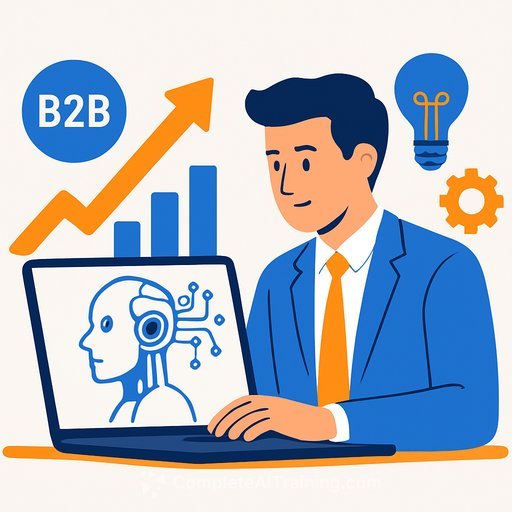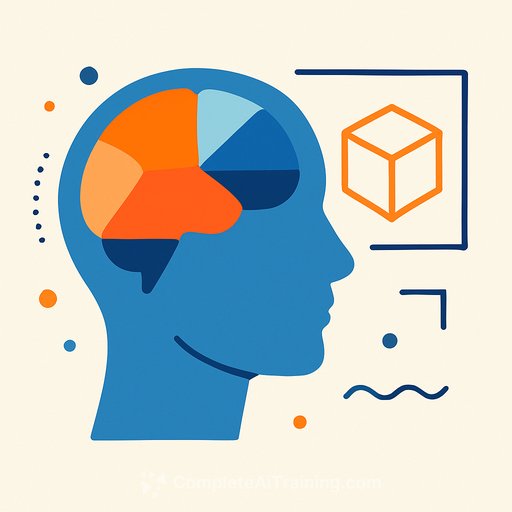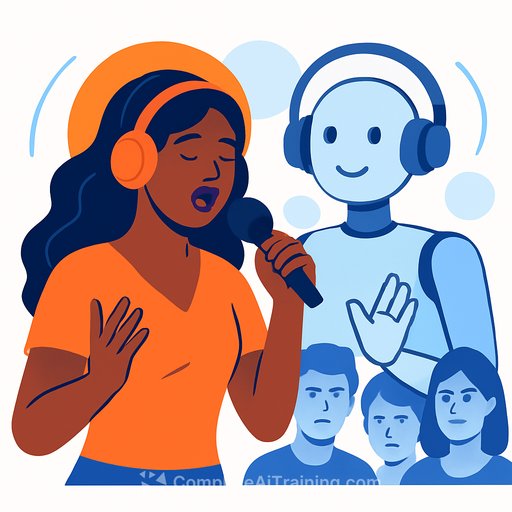B2B brands on using AI as a creative sparring partner
AI now sits inside the creative process, not outside it. For B2B teams, the biggest lift is in content and concepting, where speed and signal matter.
Marketing Week's State of B2B Marketing survey points to the shift: 79.8% of B2B brands use AI for content writing and 70.1% for creative ideas - 15 points ahead of market research. In larger companies, usage climbs to 81.3% for content versus 78.4% in SMEs.
"We're already seeing B2B brands use gen AI at various stages of the creative journey," says Vera Sidlova of Kantar.
Where AI actually helps
Teams use AI to brainstorm themes, test messaging, and explore multiple creative routes fast. "AI is playing an increasingly important role in sparking creative ideas," says Mark Barry of HubSpot. It's fueling website copy, emails, sales sheets, and blog posts - then humans refine.
Mailchimp's team used gen AI for early-stage ideation and to visualise concepts before producing with real people. The takeaway: AI can democratise idea generation, but human craft still carries the finish.
"We use AI like a creative sparring partner. It helps us brainstorm, test messaging angles, explore campaign concepts and even simulate audience reactions," says Verity Hurd at Duel.
At Dope Security, AI accelerates research and filters out weak ideas, but people make the calls. "AI can help us get ahead of bad ideas and move faster through early-stage exploration," says Erica Remmele.
Beware blanding
Over-automation creates sameness. The more you press "safe," the faster your brand voice dissolves. That's the risk many teams are working against.
AI is great for iteration, not identity. Without guardrails, you'll get generic copy that pleases everyone and moves no one.
- Lock tone of voice: examples, dos/don'ts, banned phrases.
- Define roles: AI drafts/options; humans decide/story-shape.
- Keep brand "spikes": unusual angles, strong POV, sharp language.
- Require human edits for headline, opening hook, and CTA.
- Set "no-go" areas for auto-publish; high-stakes assets need approvals.
Embedding AI in the workflow
A Brighton-based PR team uses AI to outline ideas for web copy, blog posts, and event write-ups - but every piece is written, reviewed, and approved by humans. Useful sounding board, not final author.
At Duel, AI is treated like a teammate. "We've invested in training function-specific AI collaborators for content creation, reporting, audience insights and campaign strategy," says Hurd. These internal collaborators learn tone and context so scale doesn't erase nuance.
No-code tools mean anyone from junior to director can prototype content, turn long calls into posts and decks, or refactor a podcast into a playbook - in minutes. The bottleneck is less creation and more taste.
Security and data trust
Brands are using AI for landing pages, email sequences, ad copy, and SEO content. That only works if customers trust how data is handled and teams are transparent about model use.
Adopt clear policies for training data, PII protection, and vendor selection. Align with frameworks like the NIST AI Risk Management Framework. Publish your stance in plain language so customers know what you do and what you don't.
As one head of marketing put it, "Customers trust us with their data so we can make their experience better; it's crucial we maintain that trust as we incorporate AI."
A practical playbook for creative teams
- Define the job: idea generation, message testing, outline building, or draft v0. Keep it narrow.
- Feed context: audience, offer, objections, proof, and brand tone. Bad inputs equal bland outputs.
- Generate breadth first: 10-20 angles, hooks, and formats. Pick 2-3 to develop.
- Pressure-test fast: run quick polls, customer interviews, or internal reviews. Kill weak routes early.
- Human edit for edge: sharpen verbs, add specifics, remove filler, and insert credible proof.
- Version into channels: one core message, fit it for email, social, LP, and sales collateral.
- Ship with measurement: define success and set thresholds before you publish.
- Retain learning: log prompts, results, and edits so next time starts smarter.
What to measure
- Creative resonance: scroll depth, time on page, reply rate, save/share rate.
- Message-market fit: concept tests, qualitative feedback, sales call snippets.
- Pipeline impact: MQL→SQL conversion, meeting set rate, opportunity creation.
- Revenue influence: win rate, deal velocity, ACV on programs using AI-assisted assets.
- Brand distinctiveness: recognition surveys, branded search growth, direct traffic trend.
Guardrails that keep work original
- Write your "spine": core idea, uncommon insight, and proof. Let AI handle variations.
- Ban generic phrasing and overused metaphors. Keep a living list inside your prompts.
- Use reference pieces that sound like you. Few-shot examples boost tone accuracy.
- Route 1 is rarely the best. Expect to iterate 3-5 times before it feels right.
The bottom line
AI should accelerate and augment human creativity. It can help teams move faster, explore smarter, and ship more - without losing the edge that makes your brand memorable.
Treat it like a sparring partner. Set boundaries, train it on your voice, measure results, and keep a human in the chair for final judgement.
Further resources
Your membership also unlocks:










